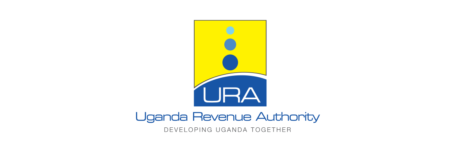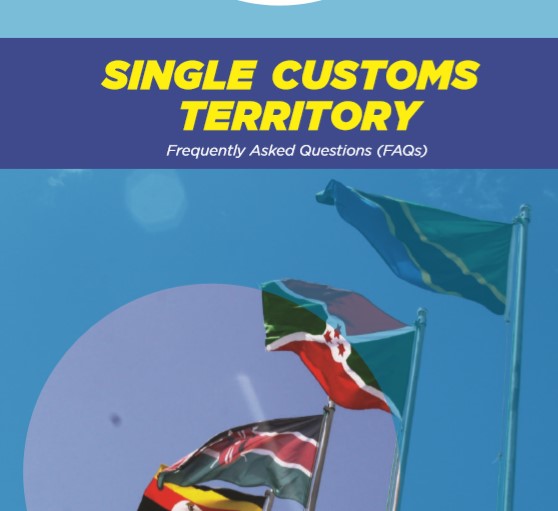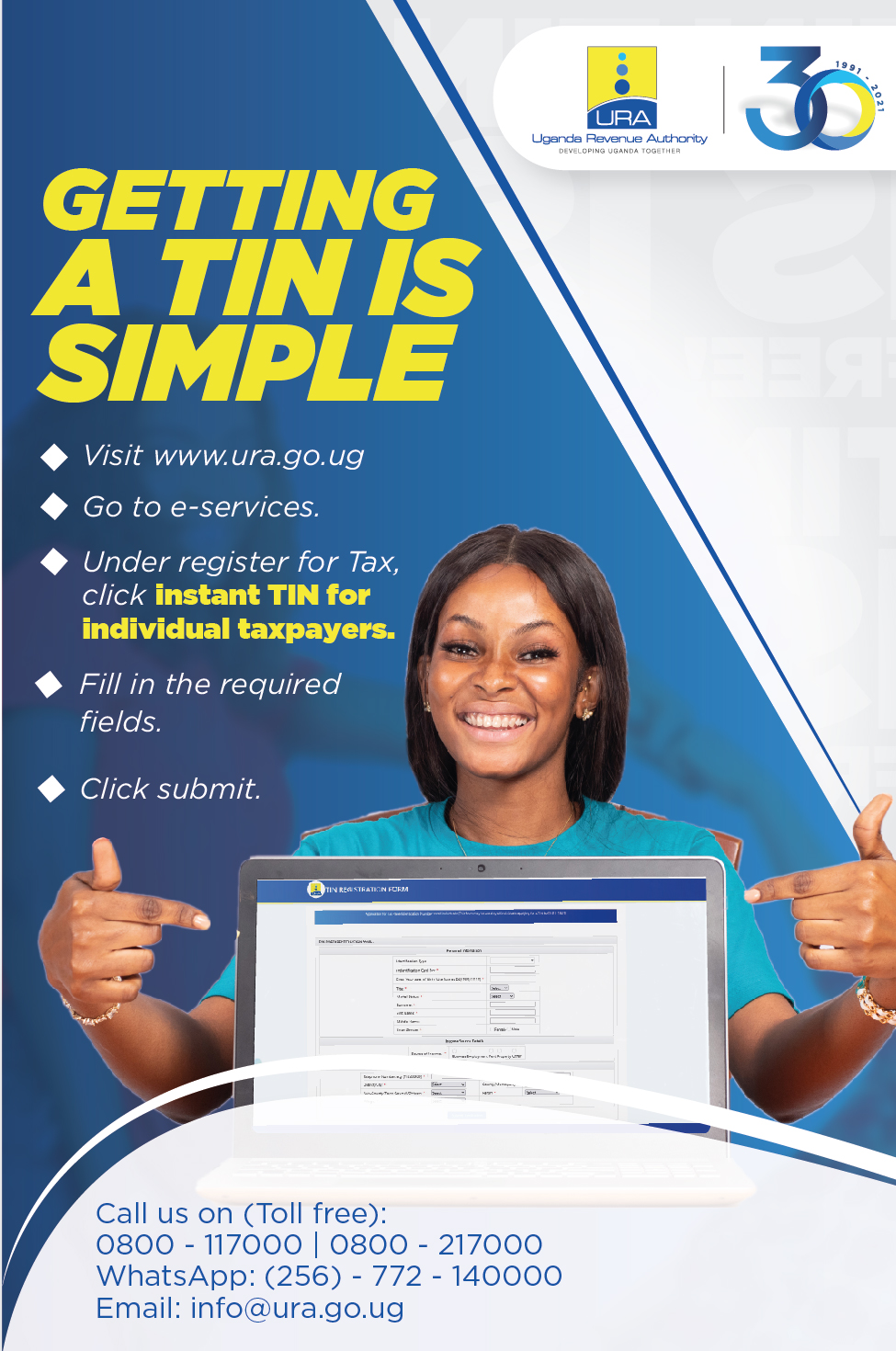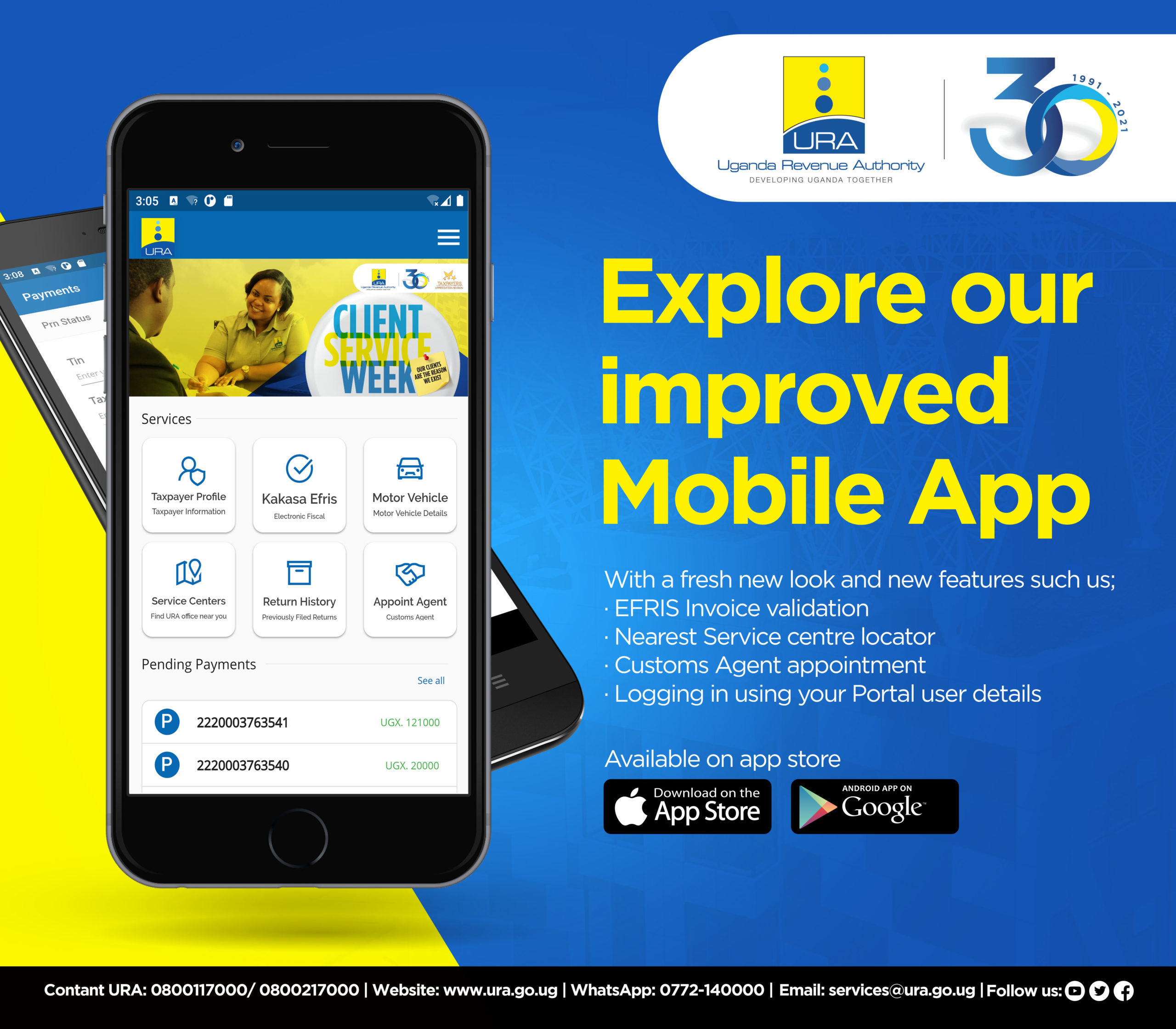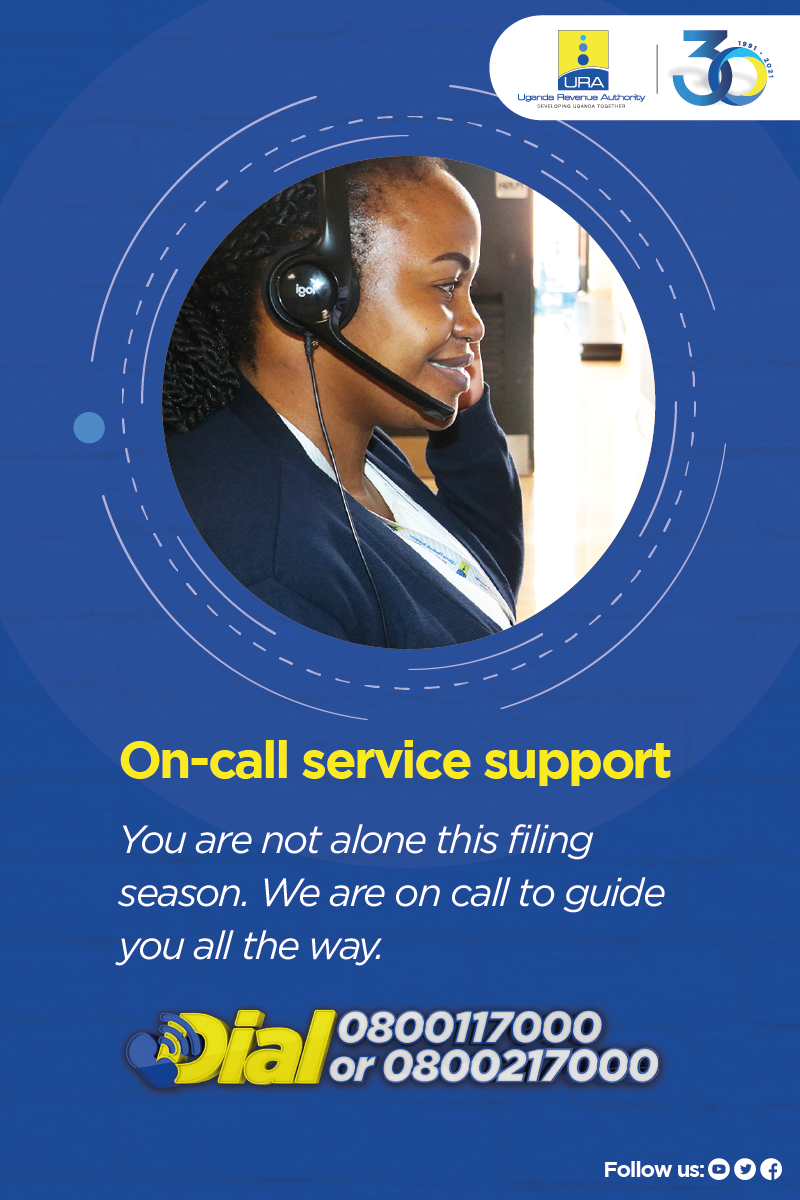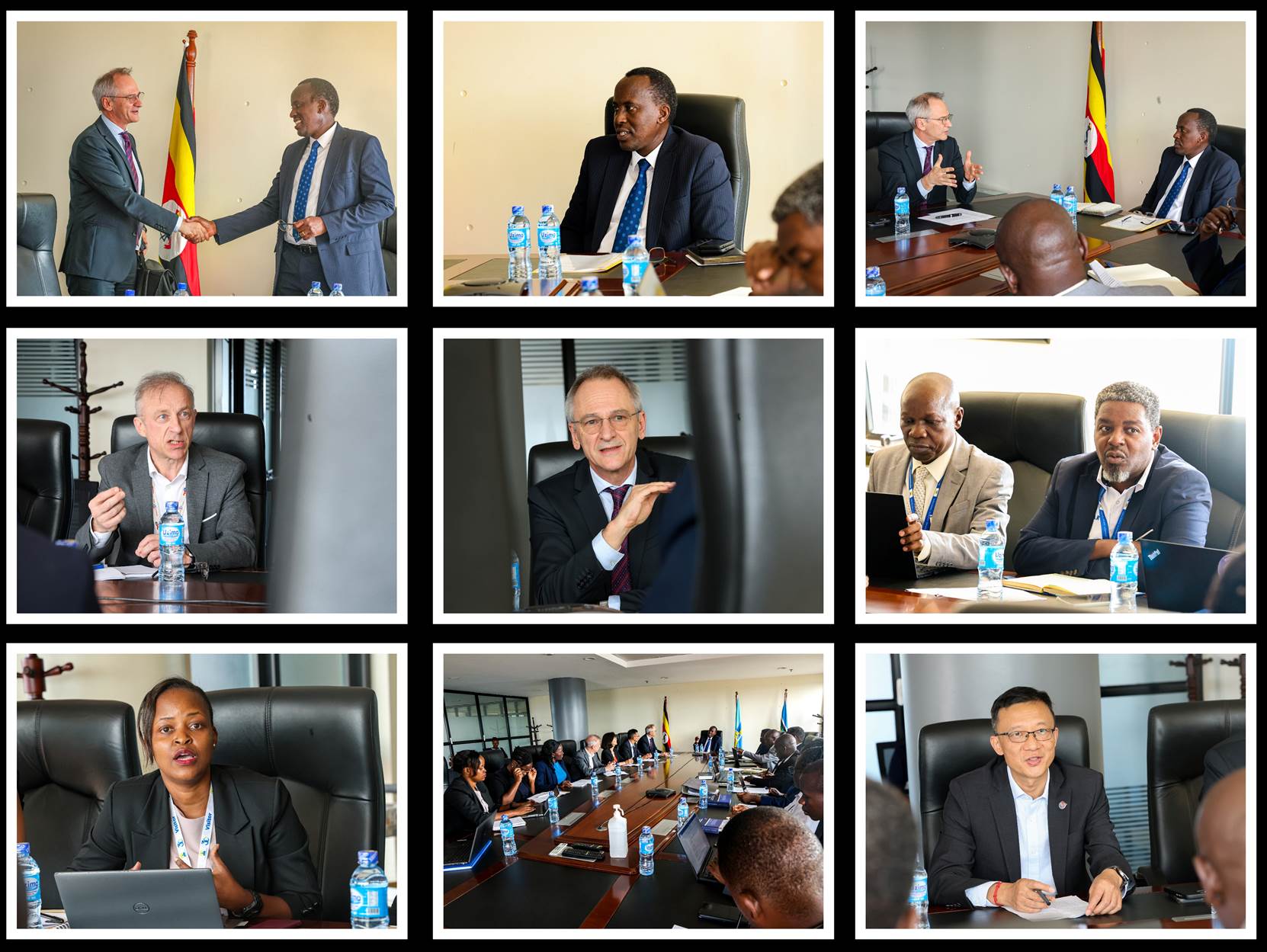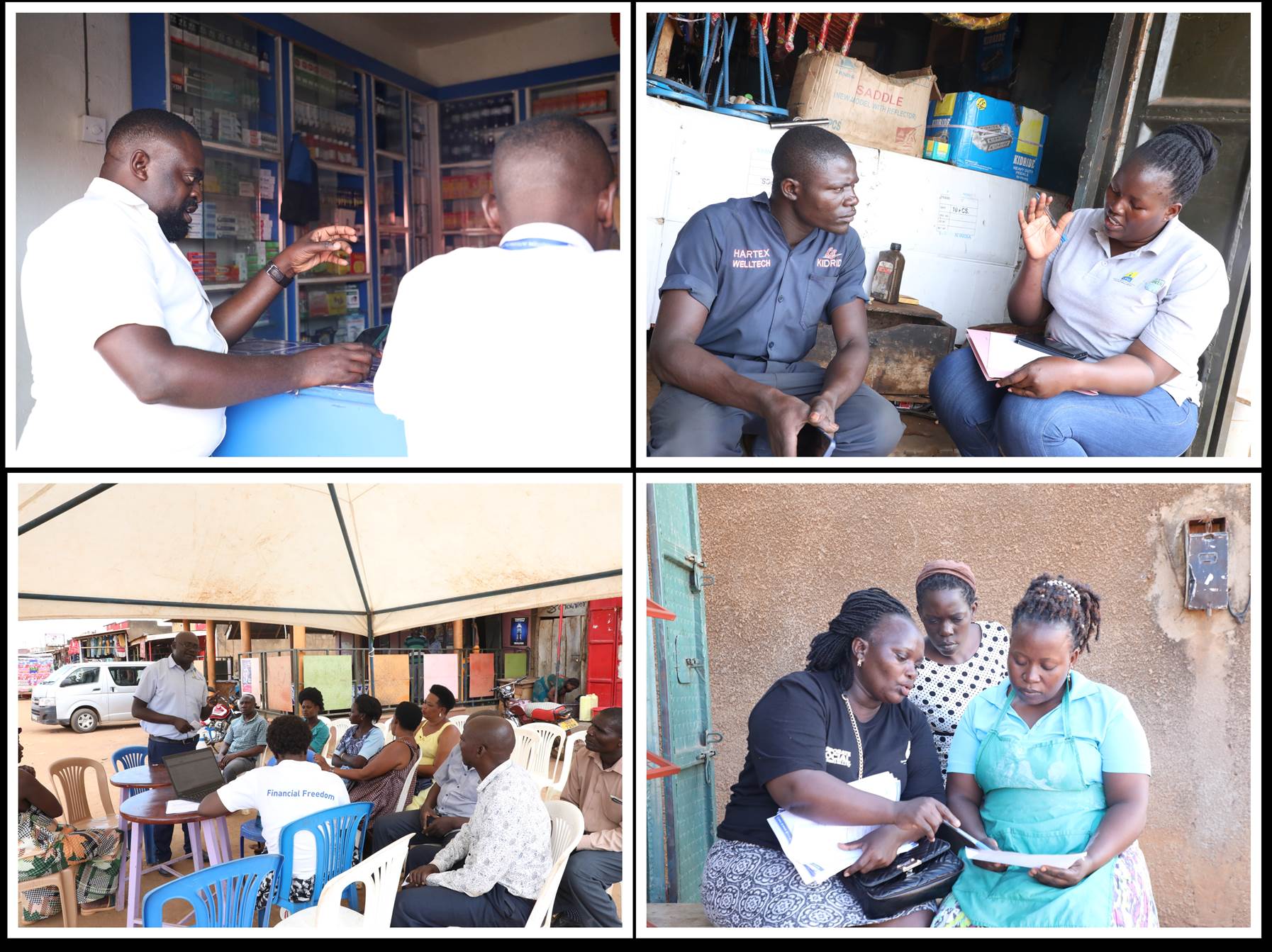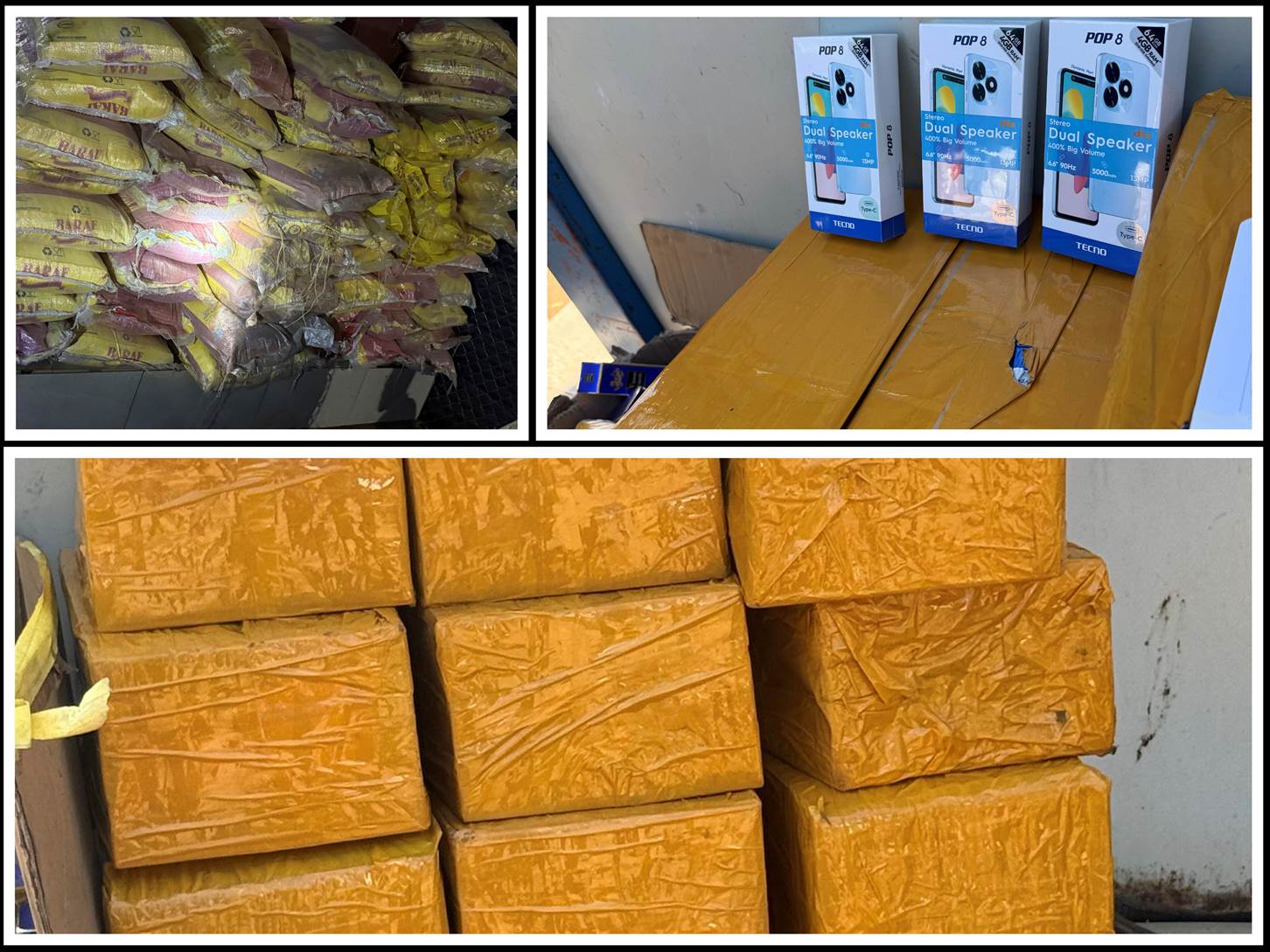SCT is the full attainment of the Customs Union achievable through removal of trade restrictions including minimization of internal border controls.
It is about achieving free circulation of goods in the Customs Territory in order to reduce the cost of doing business.
• Goods are cleared at the first point of entry;
• One Customs declaration is made at the destination country;
• Taxes are paid at the point of destination when goods are still at the first point of entry;
• Goods are moved under a single Regional bond from the port to destination;
• Goods are monitored by electronic cargo tracking system;
• Interconnected Customs systems;
• Minimized internal controls / checks;
The SCT commenced in 2014
• All intra Region trade cargo moving within the EAC partner states is cleared under the SCT procedures;
All imports into EAC are cleared under the SCT
All exports out of EAC are cleared under the SCT
transporters
• Reduced clearance time
• Reduced the cost of doing business
• Reduced administrative costs and regulatory requirements
• Reduced the risks associated with non-compliance on the transit of goods
• Enhanced trade in locally produced goods
• Enhanced the relationship between the private and public sectors;
• Minimizes smuggling at a regional level
• Efficient revenue management
• Enhanced application of Information Technology and data collection at the regional level
• Synergy through shared resources and utilization of economies of scale
• Real time exchange of data between Revenue and Ports Authorities enabling faster clearance of goods
• Reduced clearance time on average ie
• Northern corridor from 18-21 days to 4-6 days
• Central corridor from 18-22 days to 5-6 days
SCT is the full attainment of the Customs Union achievable through removal of trade restrictions including minimization of internal border controls
It is about achieving free circulation of goods in the Customs Territory in order to reduce the cost of doing business.
• Goods are cleared at the first point of entry;
• One Customs declaration is made at the destination country;
• Taxes are paid at the point of destination when goods are still at the first point of entry;
• Goods are moved under a single Regional bond from the port to destination;
• Goods are monitored by electronic cargo tracking system;
• Interconnected Customs systems;
• Minimized internal controls / checks;
The SCT commenced in 2014
• All intra Region trade cargo moving within the EAC partner states is cleared under the SCT procedures;
• All imports into EAC are cleared under the SCT;
• All exports out of EAC are cleared under the SCT;
• Increased turn around trips for transporters
• Reduced clearance time
• Reduced the cost of doing business
• Reduced administrative costs and regulatory requirements
• Reduced the risks associated with non-compliance on the transit of goods
• Enhanced trade in locally produced goods
• Enhanced the relationship between the private and public sectors;
• Minimizes smuggling at a regional level
• Efficient revenue management
• Enhanced application of Information Technology and data collection at the regional level
• Synergy through shared resources and utilization of economies of scale
• Real time exchange of data between Revenue and Ports Authorities enabling faster clearance of goods
• Reduced clearance time on average i.e
• Northern corridor from 18-21 days to 4-6 days
• Central corridor from 18-22 days to 5-6 days
• Increased number of trips for transporters on average from1 trip to 3-4 trips per month
• Reduced cost of clearance of goods by approximately 300 USD per consignment.
• Use of a single Customs declaration within EAC
• Reduced number of Customs documentation from an average of 5 to1
• Use of one regional transit bond from 4-6 national transit bonds
• Use of one Customs agent within the region
• Increased cargo volumes and revenue collection
• Reduced the risks on the transit of goods through
• Sharing of pre-arrival information
• Customs declaration while goods are at the point of entry
• Automated end to end reconciliation
• Harmonized cargo tracking system
• Goods are secured in transit
• Enhanced application of Information Technology and data collection at the regional level
• Synergy through shared resources and utilization of economies of scale
• Mutual recognition of Customs agents in the region
• Online documentation and payment of port charges
The EAC Partner States – Burundi,
Kenya, Rwanda, Tanzania, Uganda and South Sudan
The key stakeholders involved in
the SCT include:
• Importers and exporters
• Customs agents
• Transporters
• Bonded warehouse owners
• Container Freight Stations (CFSs)
• Ports Authorities
• Shipping Line Agents
• Insurance Companies
• Revenue Authorities
• Partner states
• East African Community (EAC)
• Other Government Agencies e.g. standards Bureaus

Yes, some stakeholders must fulfill specific requirements to be able to smoothly transact under the SCT clearance procedures.
• Appoint a licensed clearing agent/or get licensed for own clearance
• Fulfill the requirements of shipping lines/ agents
• Knowledge on SCT process and documentation
• Possess a license from respective Revenue Authorities
• Execute a Regional Bond Guarantee
• Register with Port Authorities
• Fulfill the requirements of shipping lines/ agents
• Have knowledge on SCT procedures and Customs business systems
• Have access rights to Customs business systems
• Possess Transit License from the respective Revenue Authorities
Customs/Clearing Agents involved in the clearance process may choose to operate under the Mutual Recognition of Customs Agents and/or relocate to the First points of Entry (Dar es Salaam, Mombasa)
Note: Those who wish to operate businesses in other Partner States must meet the legal requirements for business registration
Customs clearing agents that are
licensed by one Partner state are recognized in the other Partner states and are granted access rights to operate in the respective Customs Systems to facilitate the clearance of cargo destined to and from their respective countries.
The Customs agent in the destination Partner State may nominate another agent to handle Port processes. The nominated agent is captured in the SCT declaration. This is referred to as the declarant third party.
NB: Currently the declarant third party arrangement applies only to clearances at Kenya Ports Authority (KPA).
Are Mombasa and Dar es Salaam Ports the only first points of entry into the EAC Region?
No. Airports and other intra-region loading points are also considered as first points of entry.
• Manifests are submited to Kenya Revenue Authority (KRA) and Tanzania Revenue Authority (TRA) by shipper/shipping line prior to Vessel arrival at Port
• KRA /TRA transmits manifests to the respective Revenue Authority
System in destination country
• Importer/Agent access manifest data in the respective Revenue Authority Customs Systems and makes a Customs declaration/Entry
• Taxes are paid at destination Partner state for duty paid cargo using respective national currency.
• Physical verification of selected consignments may be carried out at a designated area as may be determined by the respective Revenue Authority in destination state
• Release is issued from destination Revenue Authorities
• Goods are then removed from first point of entry
• Goods are monitored with the electronic seal along the transit routes
Is it possible to declare transit within the EAC under the SCT?
No. Transit declaration shall only apply to goods originating from foreign countries and destined to countries outside the EAC region. Movement of goods within the EAC Partner states is referred to as “transfer of goods
A regional transit bond guarantee is applicable for goods declared for warehousing, temporary importation, transit and on duty remission/ exemption. There’s no bond guarantee for goods where taxes have been paid at destination.
Cargo selected for Physical examination is verified on arrival at the Ugandan Borders, An importer may nominate a representatives at the first point of entry to supervise for selected cargo that may be the physical examination at the Port.
Yes, it is possible to sell goods where duties and taxes have been paid in another Partner State other than the destination country subject to approval from the Commissioners of Customs of the destination state and the state where the goods are to be sold.
Yes, however the clearance procedures and controls at the internal border stations have been significantly minimized.
Goods produced in the EAC region are not subjected to import duty when transferred to another Partner State if they meet the EAC rules of origin criteria. However, these goods are subject to domestic taxes which must be paid before the goods move from the country of origin to the destination Partner State.
Yes, currently the RECTS is free of charge.
Partner States have reduced the number of weigh bridges.
• Northern Corridor: Cargo in transit/transfer is weighed once
• Central corridor: Cargo in transit/transfer is weighed at 7 weigh bridges from 23.
The Revenue Authorities have dedicated teams to monitor the systems performance and ensure continuous stability.
The clearing agent executes a regional Transit Bond Guarantee for Bonded Cargo and is therefore responsible for ensuring that it reaches the final destination.
Some Government agencies have positioned their staff at the first points of entry and/or developed working relationships with the relevant OGAs in the Partner state of the first point of Entry.
Whereas the Partner States provide security, the responsibility of securing the goods lies with the Customs clearing agent, the transporter and the owner, or escalating cases to respective security agencies.
The SCT provides for a larger Scope of operations and business Opportunities
There is ICT interconnectivity between all the Revenue Authorities and the Port Authorities to enable Real time information exchange on each consignment
It is a cargo movement document issued by the partner state where the goods are originating from. It is sometimes referred to as a “cargo manifest.”
Container Freight Stations are extensions of the port which are licensed by the Commissioner of Customs for the purpose of storage and clearance of goods and to ease congestion at the port. They may also be also referred to as Internal Container Depot (ICD).
• Customs agent (on behalf of the consignee) presents the purchase documents/sales contract and a copy of the warehousing entry to the bond officer.
• Bond officer generates a local manifest as per the documents presented by Customs agent
• Bond officer issues the manifest to the clearing agent to enable cap turing of an SCT declaration in the country of destination
• The Customs agent includes manifest number in SCT
declaration that is generated in the destination Partner State
• SCT declaration is released in the destination country and transmitted to originating Partner States
• Bond officer validates the SCT declarations, uploads a Verification Account and generates a C2
• Customs officer at the border ‘exits’ the consignment upon arrival at the Exit Border
No, SCT clearance procedures does not cater for cross border trade. These are cleared under the simplified trade regime on arrival at internal border stations.
All Exempted goods are cleared under the Warehousing Regime (WT8.) The goods are secured under an RCTG bond, and an exemption entry processed on arrival at destination partner state.
• Obtain incident report and Scene of Crime from Police Authorities, Revenue Authority of the state where incident happened, nearest URA office and any other related evidence e.g. Pictures of the Scene etc.
Submit a Tax refund Claim to the respective Revenue Authority
Yes it is possible upon approval prior to making customs declarations.
Goods not declared within 21 days are liable for auction, as provided for under the Customs Law.
How is groupage or consolidated cargo handled under SCT?
All groupage cargo is cleared under the Warehousing regime as declared on the master Bill of Lading. Deconsolidation/ breaking bulk is done when goods arrive at destination partner state.
This is the Regional Customs Transit Guarantee Bond that is used to secure warehoused Goods that are on transit within the COMESA and the EAC Regions. The RCTG is housed and managed in the RCTG MIS system by the COMESA RCTG Technical team which is interconnected with the systems of Revenue Authorities.
No, a Customs declarant executes an RCTG in only one Partner state and is issued with a unique identifier, which is usable for transactions for all the Partner State.
No. A declarant cannot use another declarant’s RCTG identifier for clearance of cargo.
At what point is the RCTG bond retired?
The RCTG Bond is automatically retired once arrival of goods in the Customs warehouse in the destination Partner State is confirmed.
It is the responsibility of the declarant to monitor the performance of their RCTG accounts. eg. bond balances, active carnets etc. the declarant can acquire rights in the MIS system from COMESA RCTG technical team
Under SCT the regional AEOs enjoy a benefits at regional level. The Customs declarations for AEOs are marked by an AEO Logo and a special identify.
The cross border processes are jointly undertaken by Revenue Authorities and all other Government Agencies as may be required
Goods originating from EAC to non EAC Countries. The Exports are categorized into Direct Exports and Indirect Exports.
- Exporter acquires the required approvals and certificates from origin Partner State
- Customs Agents Captures Export declaration with the Partner State where the goods are originating
- Export declaration is secured by a regional Bond (RCTG)
- Processing and release of the Export declaration/entry is done in the origin Partner State (data transmitted to port Authority & Transit Partner state)
- Physical verification of selected consignments may be carried out at a designated area as determined by the respective Revenue Authority
- Exit notes or T1s (C2) are generated by originating Partner State. (Data transmitted Port Authority & Transit Partner state)
- The Exports may be armed with the electronic cargo seals to proceed to Exit Borders
- At the Exit Borders, origination Partner states ‘confirms exit’
- At Entry Border in transiting Partner State, ‘confirm arrival’ is done on the C2. (Arrival Message transmitted by transiting partner
state back to originating partner state)
- On arrival at Port, gate in and are port processes are handled. Port transmits message to Origination Partner state and Bond is acquitted.
• Burundi: Burundi Revenue Authority (OBR)
• Uganda: Uganda Revenue Authority
• Kenya: Kenya Revenue Authority
• Tanzania: Tanzania Chamber of commerce
• Rwanda: Rwanda Revenue Authority
Exports to Non SCT countries
e.g. DRC are cleared using the older Exports processes.
Yes, Transit through refers to goods originating from a Non Partner State moving to another Non Partner state and transiting through a Partner State
Yes, Transit through refers to goods originating from a Non Partner State moving to another Non Partner state and transiting through a Partner State.
- Goods arrive at the Border of a Partner State (First state into the EAC)
- Customs Agents Captures a Transit Entry with the Partner State
- Transit declaration is secured by a regional Bond (RCTG)
- Transit Entry is Processed and released (Entry data transmitted to port Authority & all other Partner states where the goods shall transit)
Note: Transit goods are not subjected to Physical verification unless there are
reports of non-compliance - Generation of Exit notes or T1s. (T1 Data transmitted to Port Authority & all other Partner states where goods shall transit);
- The Transit through goods are armed with the electronic cargo seals to proceed to Exit Borders in the first Partner State
- At the Exit Borders, ‘confirm goods exit’ is done and goods may proceed to
Enter another transit Partner state - On arrival in the next transit
Partner state, a C2 is generated. The C2 used at all borders in all subsequent transit Partner to confirm Entry or Confirm Exit in respective states
- On arrival at the Final Exit point from the EAC (Port or land point), port
gate in or final Exit processes are conducted. (Port or Revenue Authority in last transit Partner state transmits message to Partner state where Entry was captured and Bond is acquitted.)
Regimes under SCT are progressively implemented.
• IMPORTS – Implemented
• INTRA REGION TRANSFERS – Implemented
• EXPORTS – Implemented
• TRANSIT THROUGH – Yet to be implemented.

Partner states have SCT liaison offices for efficient coordination of SCT activities.
Whom do I contact for any inquiries and clarifications on SCT?
Partner states have SCT liaison offices for efficient coordination of SCT activities.
Tanzania Revenue Authority
Email: sct-liaison-gp@tra.go.tz SCTOSBPstaff@tra.go.tz Telephone: +255 222138814
Burundi Revenue Authority
Email: liaisonoffice-gp.sct@obr.gov.bi Telephone: +257 22282246
Kenya Revenue Authority
Email: sct@kra.go.ke Telephone: +254 709013076
Email: sct-mombasa@ura.go.ug Telephone: +256 417 442028/3312
Rwanda Revenue Authority
Email: sct@rra.gov.rw
Telephone: +250 788 185674, +250 788 185709
Email: SCTsupport@kpa.co.ke Telephone: +254 721279931
Tanzania Ports Authority
Email: +2552117616
Telephone: sct.support@ports.go.tz
DISCLAIMER
This Information is strictly for purposes of guidance to our clientele and should not at any one time be used in place of the substantive law; and is subject to change on amendment of Tax legislation and any other regulations governing Tax administration.
